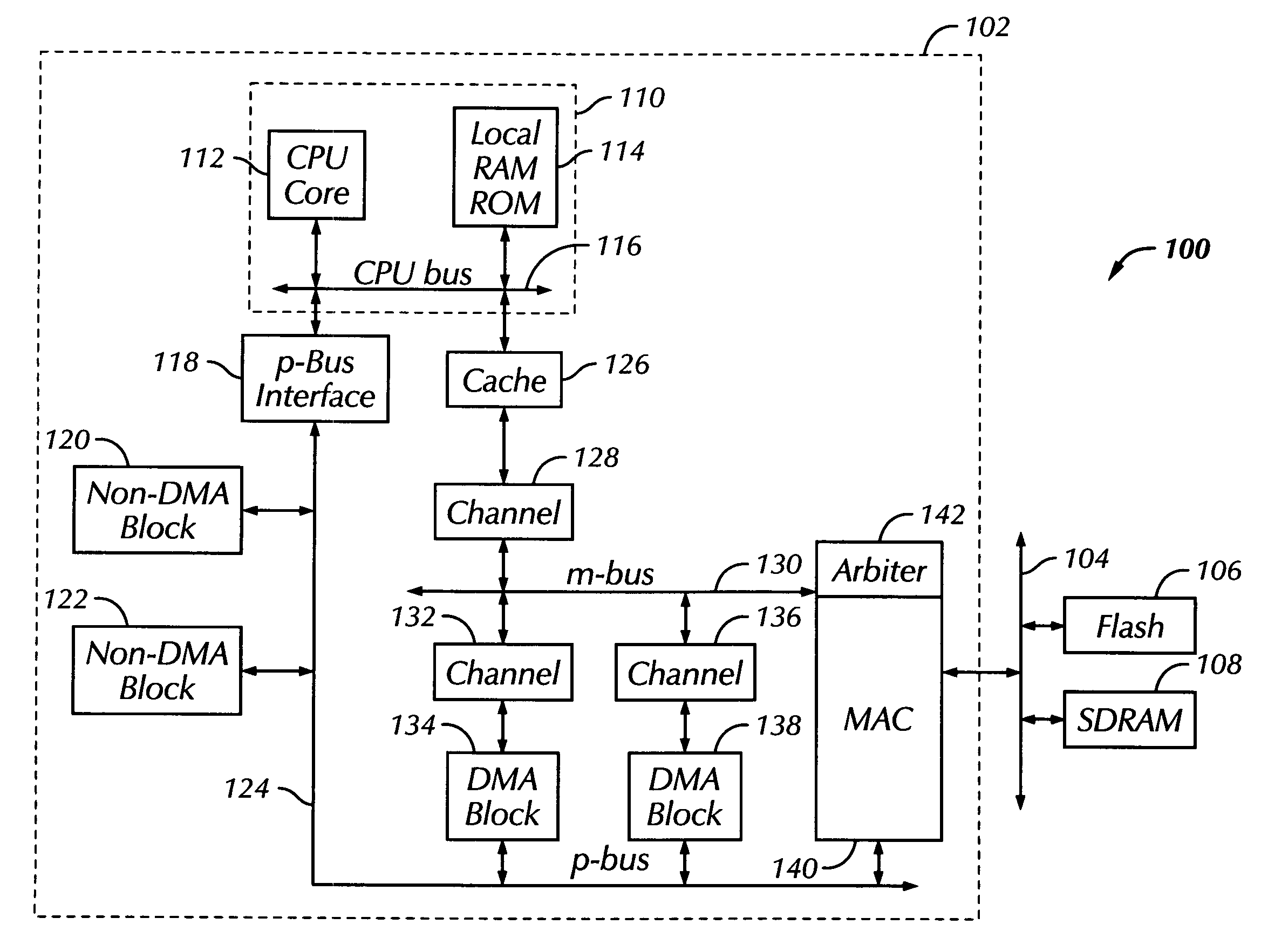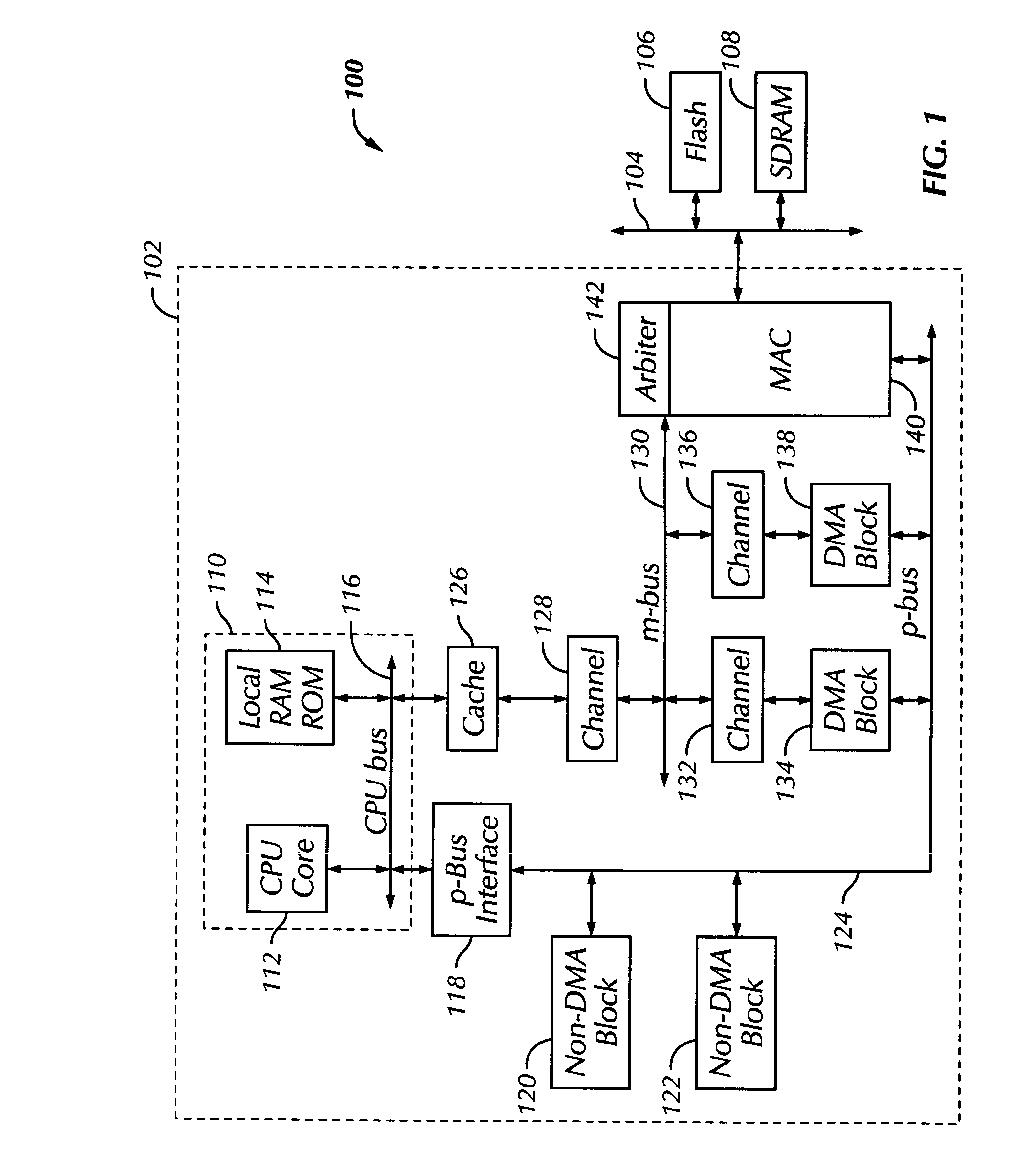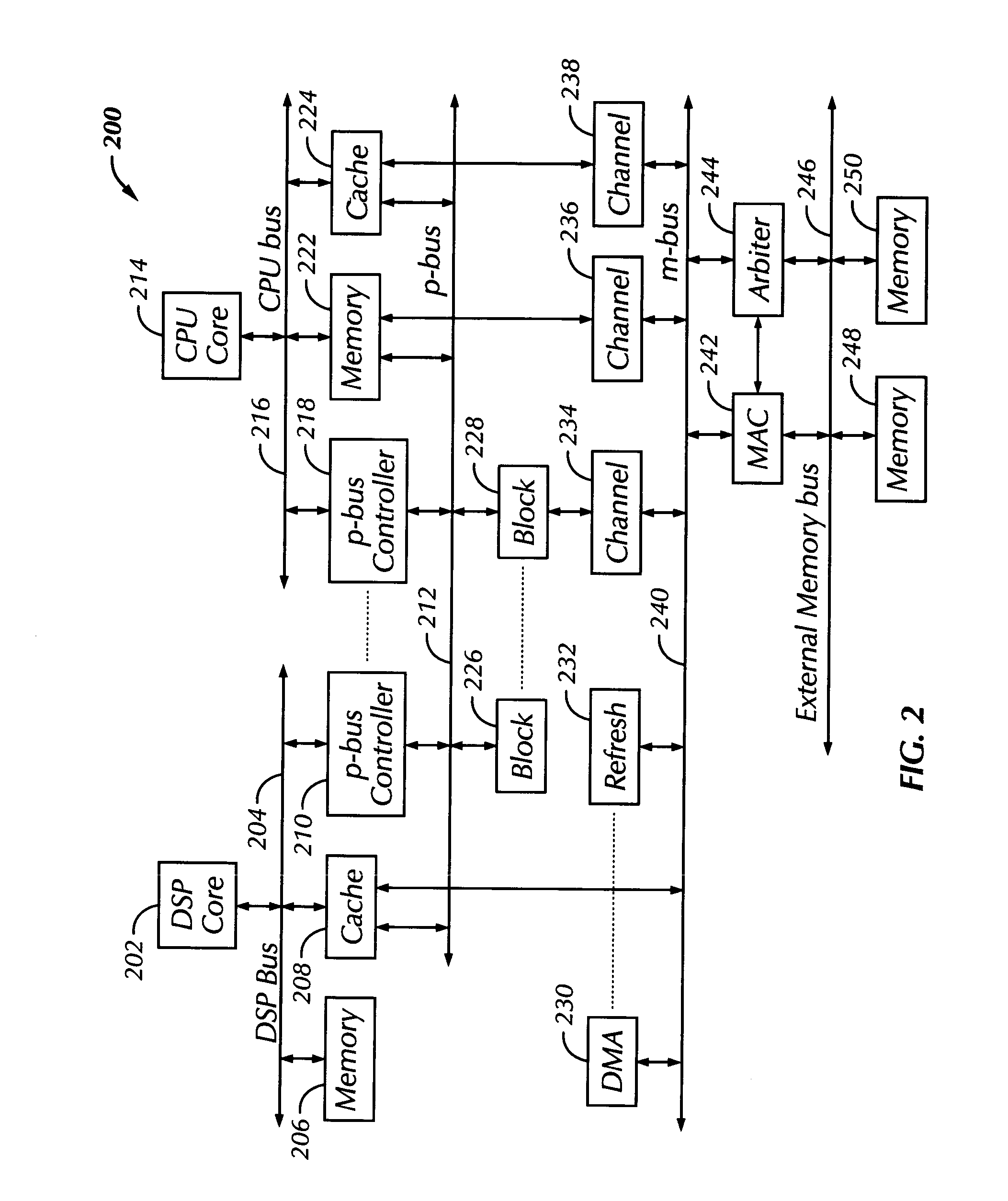Unidirectional bus architecture for SoC applications
a bus and soc technology, applied in the field of flexible modular integrated circuit embodiments, can solve the problems of increasing the difficulty of a single company to provide its customers with all of the intellectual property (ip) cores, and insufficient just purchasing ips, etc., to achieve efficient integration of a variety of functional circuits
- Summary
- Abstract
- Description
- Claims
- Application Information
AI Technical Summary
Benefits of technology
Problems solved by technology
Method used
Image
Examples
Embodiment Construction
[0049]The present invention is a system-on-chip interconnection structure and method that enables the efficient on-chip integration of a variety of functional circuits and peripherals. The present invention provides an on-chip interconnect architecture that standardizes how systems-on-chip are fabricated on silicon semiconductor integrated circuit chips. This disclosure describes numerous specific details that include specific structures, circuits, and logic functions in order to provide a thorough understanding of the present invention. One skilled in the art will appreciate that one may practice the present invention without these specific details.
[0050]FIG. 1 illustrates an on-chip interconnect architecture embodiment of the present invention for system-on-chip integration, and is referred to by the general reference numeral 100. The system-on-chip interconnect architecture 100 comprises a single semiconductor chip 102 that may be externally interfaced to a shared memory bus 104 ...
PUM
 Login to View More
Login to View More Abstract
Description
Claims
Application Information
 Login to View More
Login to View More - R&D
- Intellectual Property
- Life Sciences
- Materials
- Tech Scout
- Unparalleled Data Quality
- Higher Quality Content
- 60% Fewer Hallucinations
Browse by: Latest US Patents, China's latest patents, Technical Efficacy Thesaurus, Application Domain, Technology Topic, Popular Technical Reports.
© 2025 PatSnap. All rights reserved.Legal|Privacy policy|Modern Slavery Act Transparency Statement|Sitemap|About US| Contact US: help@patsnap.com



